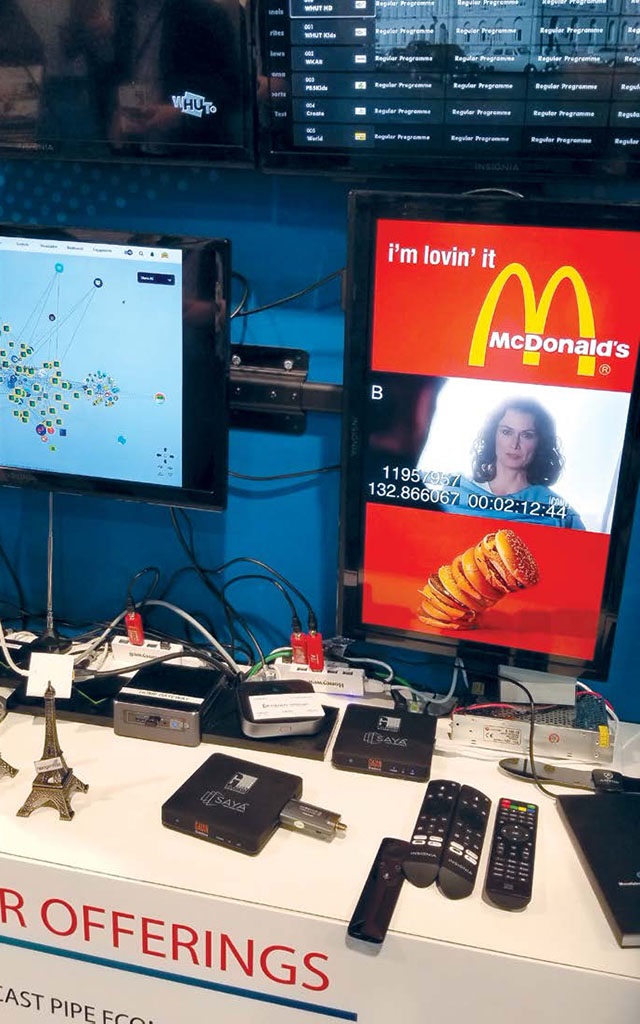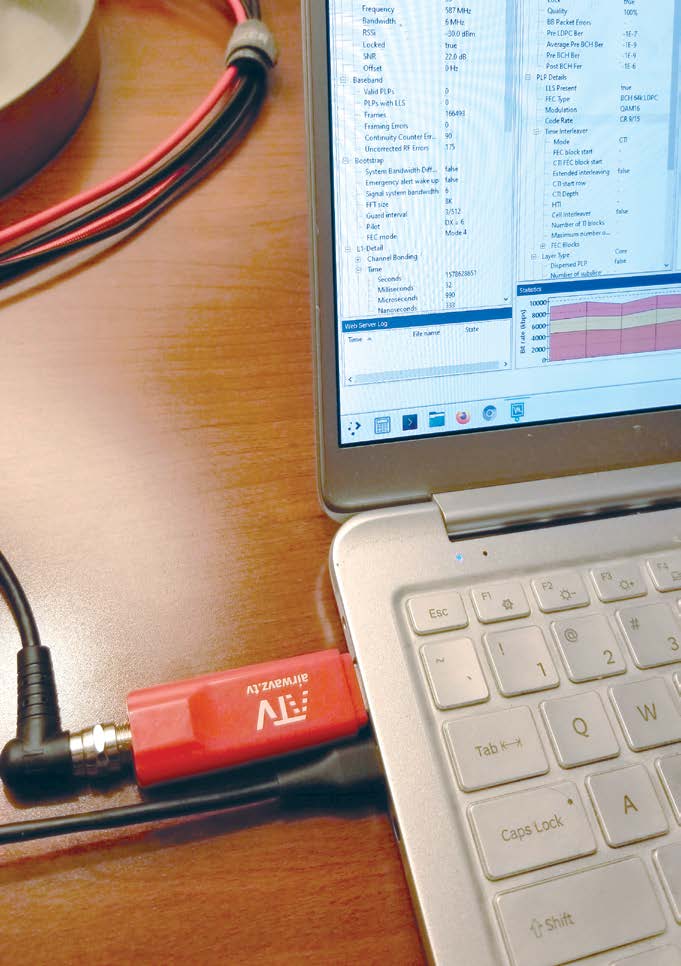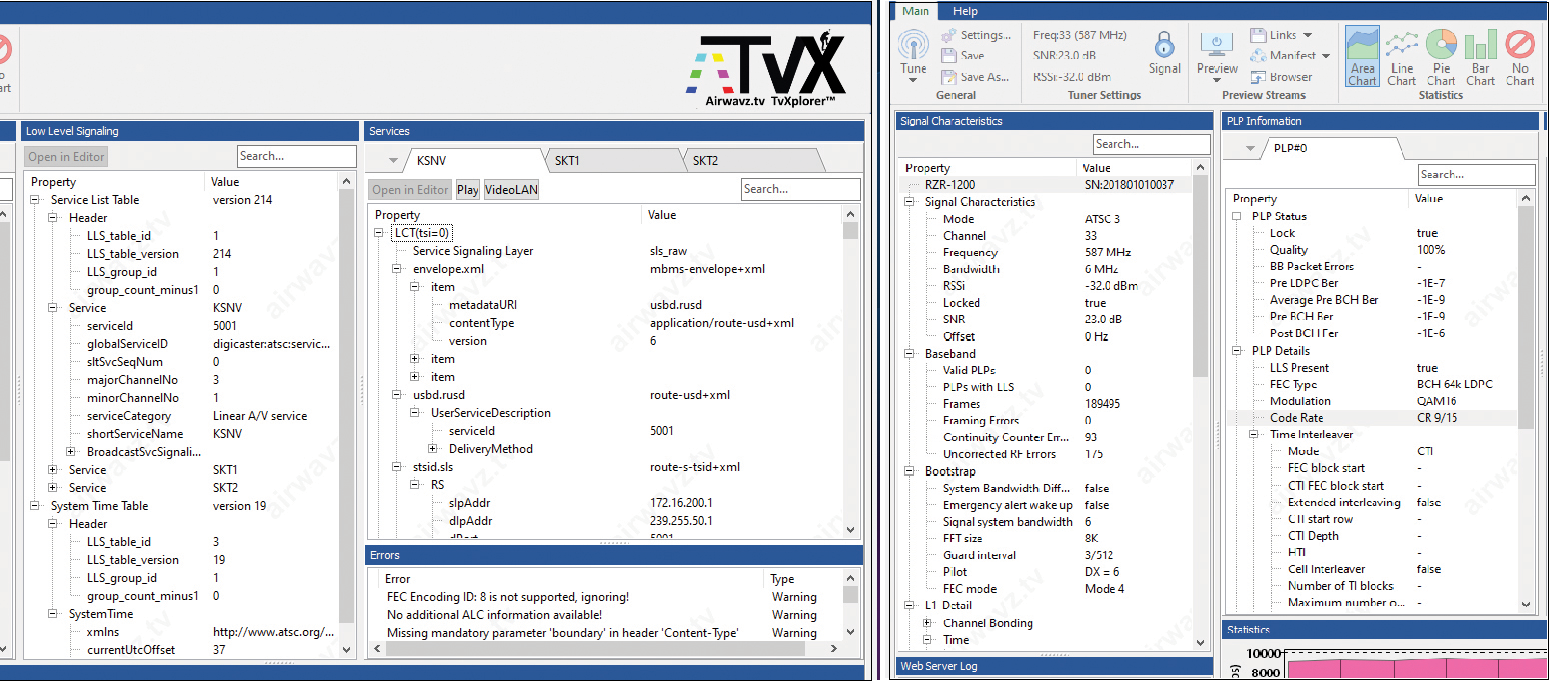NextGen TV at CES 2020: Deployment and Testing
My first Consumer Electronics Show was 2006. That year the conversion to digital TV (ATSC 1) was underway and manufacturers of all sizes were showing TV sets of all sizes, as well as converter boxes people could use to receive the digital broadcasts on their existing analog TVs. Fourteen years later, TV sets have been replaced by large displays with streamed programming.

In the limited time I had to walk through the exhibits at this year’s show, I saw media products had taken a back seat to artificial intelligence, autonomous vehicles and sensors, smart home/city, gaming, drones and health products. Hyundai had a big air taxi on display (see Fig. 1), joining the Bell air taxi that attracted interest last year. I didn’t see any mention of over-the-air TV (outside the NextGen TV exhibit), except for one sign touting Samsung’s technology advances, with ATSC 3.0 listed under 2020.
However, the major TV manufacturers are supporting NextGen TV. LG Electronics, Samsung and Sony announced they would have ATSC 3.0 tuners in several of their 8K displays. Because there is limited 8K content, manufacturers are using AI to up convert 2K and 4K content for viewing on the 8K screens. This is important for broadcasters, since data bandwidth for ATSC 3.0 will be precious until ATSC 1 is shut off, making it unlikely there will be any 8K broadcasts and a limited number of 4K broadcasts.
I’m concerned that when people start taking these expensive 8K TV sets home later this year and decide to try out that new tuner, they may be disappointed in the quality of the over-the-air video compared to 4K and the limited 8K streaming content. I expect the quality will improve, just as it did in the years after the rollout of HDTV 20 years ago.
CES attendees could see NextGen TV in action and the plans for the rollout later this year at the NextGen TV exhibit in the Central Hall. The good news is there will be options for receiving NextGen TV without purchasing a 75-inch 8K display.
TESTING NEXTGEN TV

Gaian Solutions, an India-based technology development company, was showing an inexpensive set-top box running GAIATV3.0 middleware on Linux that, with the addition of an ATSC 3.0 USB tuner, was able to receive ATSC 3.0 broadcasts, run applications and display them on a connected display (Fig. 2). The good news is that the STB should be available in quantity for under $50. The bad news is that at this time, the only ATSC 3.0 USB tuner I’ve found will cost much more than that—close to $1,000 individually.
Get the TV Tech Newsletter
The professional video industry's #1 source for news, trends and product and tech information. Sign up below.
The good news for stations wanting to test many NextGen TV applications is the Gaian Solutions STB and middleware will work over ATSC 1, allowing use of an ATSC 1 USB tuner costing well under $100. A station using the GAIATV3.0 software and STB can roll out demonstrations of guide services, targeted advertising and such using their existing ATSC 1 facility.
Gaian Solutions plans to sell the STBs and receivers in bulk to broadcasters or distributors (with custom branding) and may also have a direct purchase option.
AIRWAVZ REDZONE TVXPLORER
As far as I know, the RedZone Receiver from Airwavz is the only ATSC 3.0 USB tuner available now that anyone can purchase. I met Bonnie Beeman and John Casey from Airwavz at CES to get an update on the tuner and evaluate their latest TvXplorer software.
The RedZone Receiver I have uses an LG demodulator chip and Silicon Labs tuner. The current RedZone Receiver uses a Sony tuner and demodulator, which Casey said reduces power consumption and provides additional data for the TvXplorer application.
The TvXplorer application runs on Windows and shows ATSC 3.0 signal and payload characteristics in expandable tables with the ability to view the xml code directly if needed. During the transition from analog to ATSC 1, Rod Hewitt’s TSReader program gave broadcasters and TV enthusiasts a way to dig into the ATSC signal, see the PSIP data and identify problems with ATSC streams.
TvXplorer provides similar features for ATSC 3.0 with the addition of physical layer data identifying modulation, coding, data rates and SNR. It also has a zero–100 quality scale calculated by comparing the received SNR with the required SNR for the signal’s required SNR for its modulation constellation and coding. This should be useful for field measurements of stations with PLPs (Physical Layer Pipes) with different modulation and/or coding.

I had no problem receiving the Channel 33 ATSC 3.0 signal transmitted at 35 kW ERP from Black Mountain. I used the Walmart Onn indoor antenna I described in my last column and my older RedZone Receiver with the latest TvXplorer software (Fig. 3 shows the setup). The software was running in a Virtualbox Windows 10 virtual machine on my portable laptop.
The signal analysis worked fine, but I ran into CPU limits when attempting to stream the ATSC 3.0 video to VLC or TvXplorer’s built-in viewer. I did not have a chance to try streaming to a player in Linux (outside the VM), which might have worked better. The video streaming worked fine on John Casey’s Surface Windows laptop at the CTA lounge. The ATSC 3.0 signal was very robust.
In testing at the CTA lounge, it was hard to break the reception—collapsing the whip antenna to minimum height didn’t kill it; even unscrewing the whip antenna from the mount (only a stub remaining) didn’t completely kill reception, although there were errors. Figs. 4 and 5 show the setup and some data from my TvXplorer hotel room testing.

The Redzone Receiver and TvXplorer bundle isn’t cheap. The website shows the current price as $1,995. While this is more expensive than a high-end 4K large screen TV, the price is reasonable when compared to alternatives, which often include annual support fees.
Airwavz promises lifetime support and updates at no additional charge. Stations launching their own ATSC 3.0 services will probably want the more expensive options from companies like Avateq and Triveni, but for engineers looking for a tool they can put on their own laptop, take to transmitter sites and use to monitor ATSC 3.0 broadcasts from other stations in the market, the bundle is attractive. TvXplorer is still evolving and future versions may include support for checking and decoding the ATSC STL-IP protocols.
OTHER OPTIONS
I have heard rumors of lower-cost ATSC 3.0 USB tuners coming from Korea and China and also got a glimpse of a ONE Media dongle at last year’s NAB Show. I expect we’ll see other options at the 2020 NAB Show.
One of the companies I’ll be following is BitRouter, which had an ATSC 3.0 STB demonstration in a suite at the Westgate, but unfortunately I was unable to connect with them before they took down the demonstration. Details on the BitRouter ATSC3pro are available at https://bitrouter.com/products/atsc3pro/, as well as a timeline for implementation of various ATSC 3.0 features.
The company said pricing would be announced at the NAB Show. I was told the ATSC3pro uses the Sony chipset and the website says it will be a USB tuner, like the GAIATV3.0. Like Gaian Solutions, BitRouter also offers ATSC 3.0 middleware (visit https://bitrouter.com/products/atsc3pak/ for information on its ATSC3pak).
We’ll have to wait until late this year to see how the NextGen TV rollout proceeds. How many TVs with ATSC 3.0 capability will be in viewers’ homes by the end of the year? Given the initial cost of those 8K sets I expect the number to be small, but the people that buy them will likely be enthusiasts who will want to hook up an antenna and try out the ATSC 3.0 tuner.
Will they find a signal? For those that aren’t in the market for a new TV, the boxes and software from companies like Gaian Solution, BitRouter and Wipro will provide viewers a lower-cost ATSC 3.0 solution, provided the price of ATSC 3.0 USB tuners drops to the point where they are less expensive than a big screen TV.
Is your station planning to launch ATSC 3.0 broadcasts? Are you ready to buy an ATSC 3.0 receiver? Which do you think will arrive first in your town—the Hyundai air taxi or NextGen TV? Contact me atdlung@transmitter.com.
For a comprehensive source of TV Technology’s NextGen TV coverage, see our NextGen TV silo.

Doug Lung is one of America's foremost authorities on broadcast RF technology. As vice president of Broadcast Technology for NBCUniversal Local, H. Douglas Lung leads NBC and Telemundo-owned stations’ RF and transmission affairs, including microwave, radars, satellite uplinks, and FCC technical filings. Beginning his career in 1976 at KSCI in Los Angeles, Lung has nearly 50 years of experience in broadcast television engineering. Beginning in 1985, he led the engineering department for what was to become the Telemundo network and station group, assisting in the design, construction and installation of the company’s broadcast and cable facilities. Other projects include work on the launch of Hawaii’s first UHF TV station, the rollout and testing of the ATSC mobile-handheld standard, and software development related to the incentive auction TV spectrum repack. A longtime columnist for TV Technology, Doug is also a regular contributor to IEEE Broadcast Technology. He is the recipient of the 2023 NAB Television Engineering Award. He also received a Tech Leadership Award from TV Tech publisher Future plc in 2021 and is a member of the IEEE Broadcast Technology Society and the Society of Broadcast Engineers.
